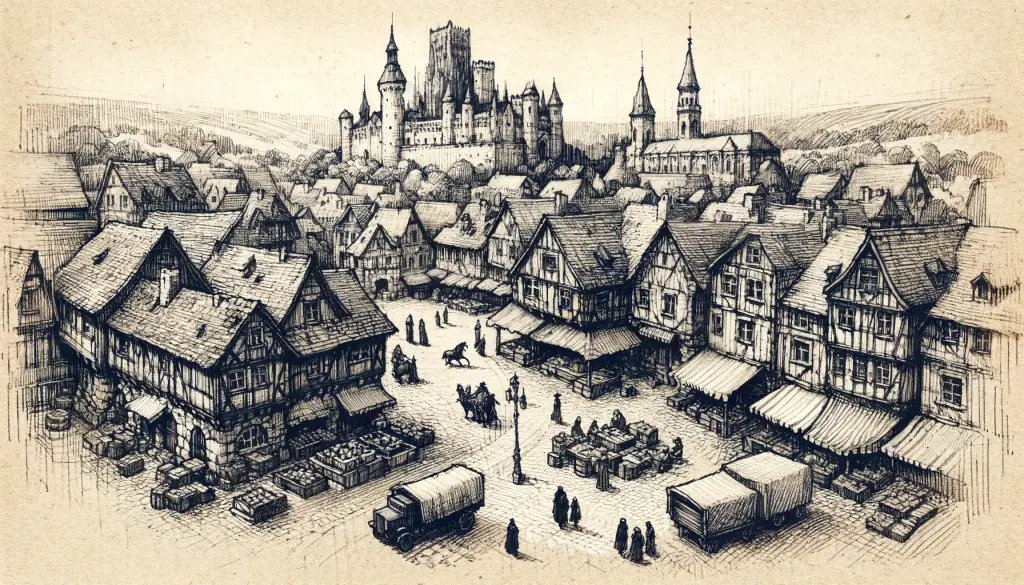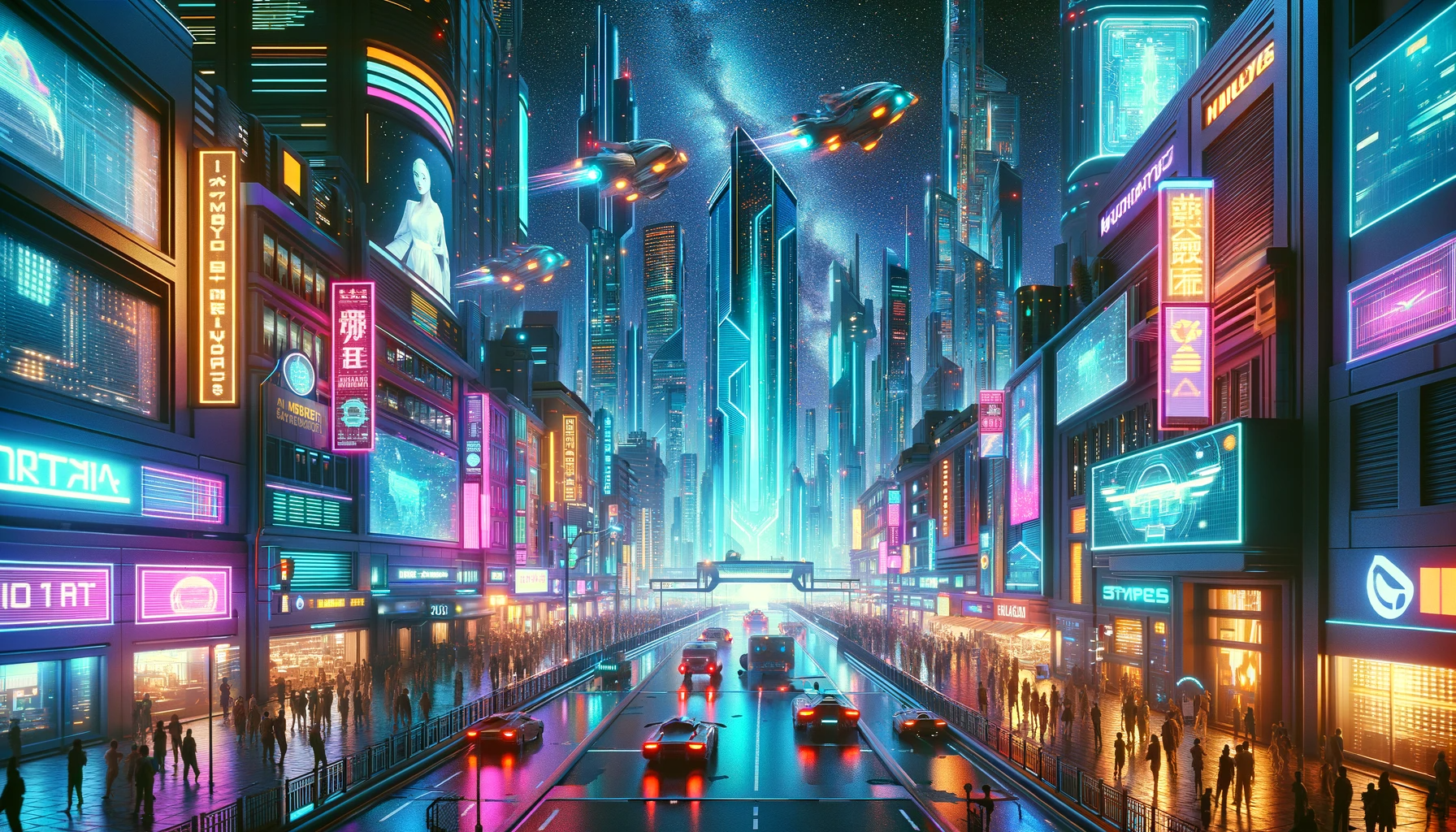What is ENVIRONMENT CONCEPT ART and what does it stand for?
If you want to make another world, you’ll need an environment concept. It plays a key role in creating the visual style and atmosphere of any work. It helps artists, directors, and designers see how the environment will look before it is physically created.
Environmental design art is also appealing to viewers. It can attract them to your story and create a sense of realism.
For example, without brilliant concept artists like H.R. Giger there would not be “Alien”, without Geof Darrow and Steve Skroce there would not be a “Matrix” as we know it. There wouldn’t be “Gravity Falls” environment design animation if not for Alexander Robert Hirsch.
Or, if we’re talking about games, let’s take an Elden Ring, for example. Without FromSoftware’s fantasy environment concept art developers, Elden Ring wouldn’t be the same, as we see and love it now.

Concept art, including environment art, is important for creating another imaginary universe.
But how to make game environment concept art if you don’t have enough experience, time, or resources? Working with a professional company proficient in game concept art services has many benefits, like expertise, quality, time-saving, professionalism, and cost-effectiveness. Whether you’re a solo developer or part of a big team, teaming up with pros can help you make great games.
We will explain to you how the environment design and concept art creation process goes.
Tools and Software commonly used | By the way, what’s the price?
Adobe Photoshop

Price:
- Individuals: US$59.99/mo
- Students and teachers: US$19.99/mo
- Teams: US$89.99/mo
Adobe Photoshop is a professional graphic editor used for creating and editing digital images. It offers a wide range of tools and features that allow artists, designers, and photographers to create high-quality images.
Photoshop is widely used in various industries, including graphic design, illustration, photography, video editing, and video game development. It is one of the most popular graphic editors globally.
Maya

Price:
- Maya (monthly subscription): USD 235
- Maya (annual subscription): USD 1,875
Maya is a software package for 3D modeling, animation, and rendering. Maya is widely used in different industries, including film, television, gaming, and architecture. It is one of the most popular software packages for 3D graphics globally.
3DS Max Design

Price:
- 3 year: $5,625
- 1 year: $1,875
- 1 month: $235
3DS Max Design is a software package for 3D modeling, animation, and rendering, specializing in architecture and design.
Modo

Price:
- Modo Indie (monthly subscription): $59.97 USD
- Modo (hour subscription): $3.00 USD
Modo is a software package for 3D modeling, animation, and rendering, offering a versatile set of tools and features. It is a good choice for artists, designers, and developers who need a powerful tool for creating high-quality 3D scenes and animations.
Substance Painter

Price:
- Substance Painter Indie (monthly subscription): $49.99 USD
- Substance Painter (per license): $99.99 USD
Substance Painter is a professional software application for texturing 3D models. It offers a wide range of tools and features that allow artists to create high-quality textures for 3D models.
Finding Inspiration and Developing Concepts
Feeling stuck in front of a blank page or canvas? Don’t worry! Inspiration is all around, waiting to be discovered. Here are simple techniques to spark your creativity and develop exciting concepts:
- Nature is a powerful inspiration. Observe landscapes, plants, or the sky. Notice colors, textures, and how light plays.
- Visit museums, galleries, or online environment design and concept art communities. Explore various styles and historical periods to find what resonates with you.
- Look beyond the obvious. Draw inspiration from everyday things like pavement cracks, traffic flow, or raindrop rhythms.
- Dive into novels, music, films, or podcasts. Varied storytelling can trigger ideas and unexpected connections.
- Travel, taste new foods, or take a spontaneous class. Stepping out of your comfort zone sparks fresh inspiration.

Brainstorming techniques
- Set a timer, let your mind wander, and jot down any thoughts. No judgment allowed!
- Connect ideas visually. Draw a central concept and link related thoughts to uncover connections.
- Share ideas with friends or fellow creatives. Group discussions can spark new perspectives.
- Set limitations like a specific color palette or theme. Constraints push you beyond your comfort zone.
Making concepts:
- Choose the idea that resonates most and build upon it. Consider the core message, target audience, and emotional impact.
- Use rough sketches and visual maps to solidify your concept. Experiment with different styles.
- Dive deeper into your concept. Research related topics and gather references to create depth.
- Share your concept for constructive criticism. Use feedback to refine and strengthen your idea.
Inspiration is unpredictable. Actively seek it, be curious, and use these techniques to turn a blank page into a canvas for your imagination.
Adding Details and Textures: Techniques for Vibrant Environments
- Creating lively digital game environment art involves more than basic shapes. Here are simple techniques to bring your digital worlds to life:
- Mimic small details like cracks or patterns from the real world. Build in layers, starting broad and adding finer details for depth.
- Use high-resolution textures for realistic surfaces. Match textures to real-world materials for authenticity.
- Simulate different times of day for realism. Enhance surfaces like water for a realistic touch.
- Apply strategic decals for wear and tear. Experiment with overlays for weather effects.
- Place detailed elements strategically. Create visual contrast between detailed and less-detailed areas.
- Ensure a performance balance for smooth interactions. Adjust detail based on the viewer’s distance for optimization.
The goal is to create a narrative and evoke emotions by applying details and textures.
Color Theory and Palette Selection

The term “color scheme” is used by designers to describe combinations of colors they use in environment concept design too. Since there are countless combinations, it can be challenging to decide which color scheme is best for your product. Fortunately, we have color theory, a discipline that helps us choose balanced and effective color combinations.
Primary colors are the foundation for all other shades. People perceive only three primary colors: purple, blue, and yellow. Every other color we see is a combination of these three colors in different amounts, intensities, hues, and tones. Traditionally, we considered red, blue, and yellow as primary colors, but research has shown that purple, blue, and yellow better describe our sense of color.
If you’ve had drawing-related lessons, you’ve probably seen a circle composed of different colors. It’s called a color wheel, which helps understand how different colors relate to each other and how they can be combined. The color wheel typically consists of primary, secondary, and tertiary colors.
The primary colors are the three pigment colors that cannot be formed by any combination of other colors. By combining the primary colors, we get secondary colors, and the mixture of primary and secondary colors gives us tertiary colors, which usually have two-word names like red-violet.
How to pick a palette for your concept art?
- Start with the basics: before adding colors, make sure all elements work correctly.
- Use mood boards for inspiration and color selection.
- Set the mood: choose colors based on the desired emotional feel.
- Differentiate between bright and soft colors, considering the project’s nature.
- Ensure accessibility for people with different abilities, including color vision deficiencies.
- Choose colors that contrast for ease of use.
- Apply the 60-30-10 rule: 60% primary color, 30% secondary color, and 10% accent color for balance and harmony.
Experiment with different schemes to find the best colors for your project.
Finalizing the Artwork, yeahhh!
Now that you’re at the exciting stage of finishing your artwork, focus on refining the small details and adjusting how everything comes together. The last touches involve making sure all the elements are well-balanced and work together smoothly to create a polished and cohesive artwork. It’s time to add those final strokes.
So where are we with this Environment Concept Art?
- Start with a cool idea for your environment design art. Look at nature, art, or your own experiences for inspiration.
- Make your environment pop by adding textures and playing with lighting effects.
- Understand color basics. Choose a color scheme that fits the mood—try monochromatic, complementary, or analogous schemes.
- Keep improving your concept. Share it with others, get feedback, and make it even better.
- Polish your artwork by perfecting details, adjusting compositions, and making everything look cohesive.
Now, it’s your time to shine! Practice, try new things, and enjoy the journey of becoming a skilled video game environment design artist.
If you want a quicker solution or need expert help, consider outsourcing to professionals. They can add a fresh perspective and get the best results.









